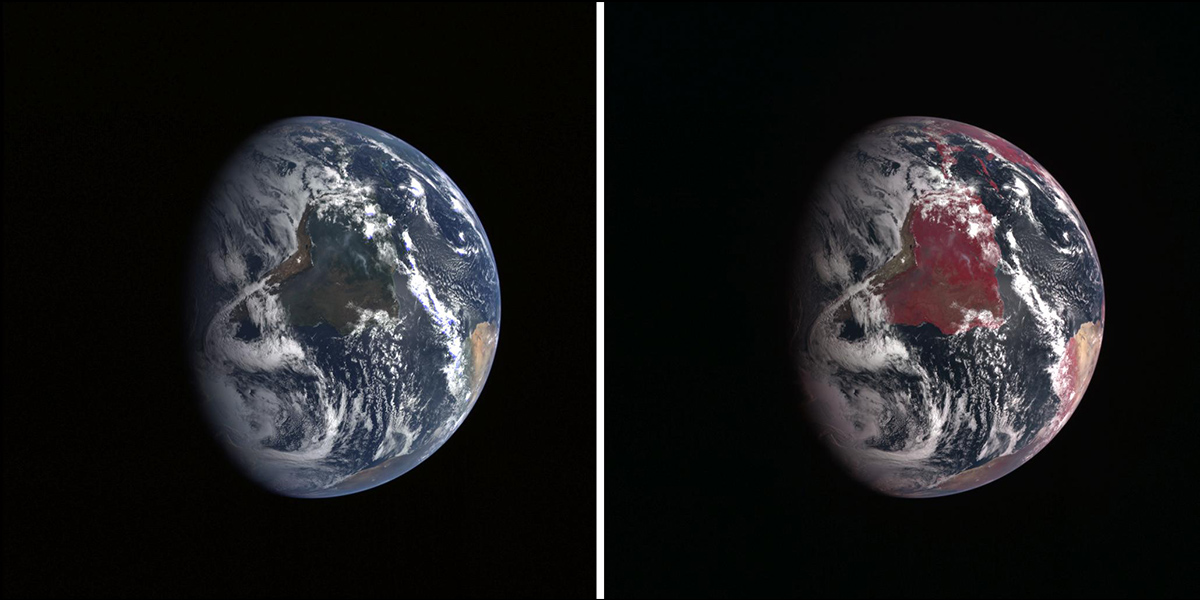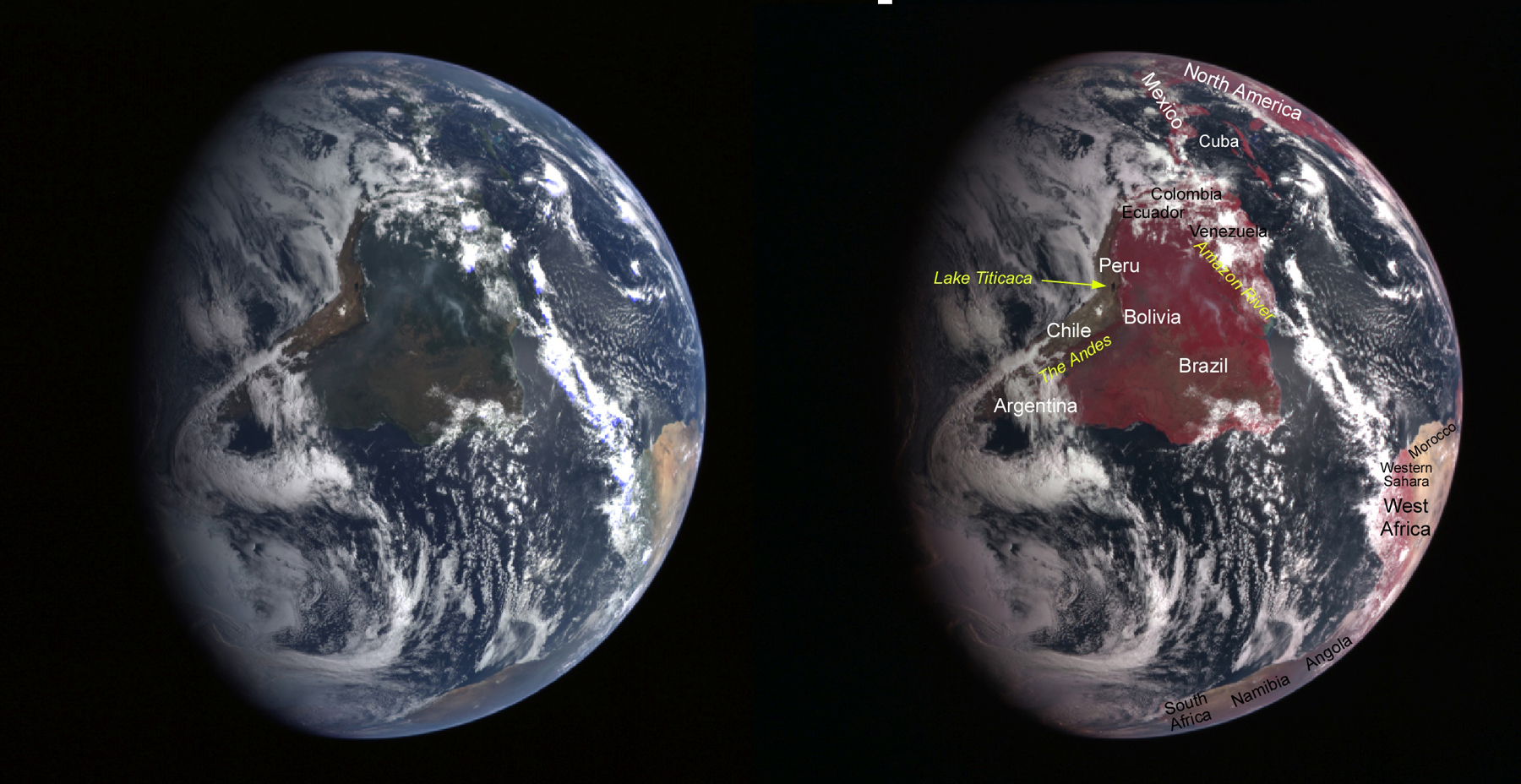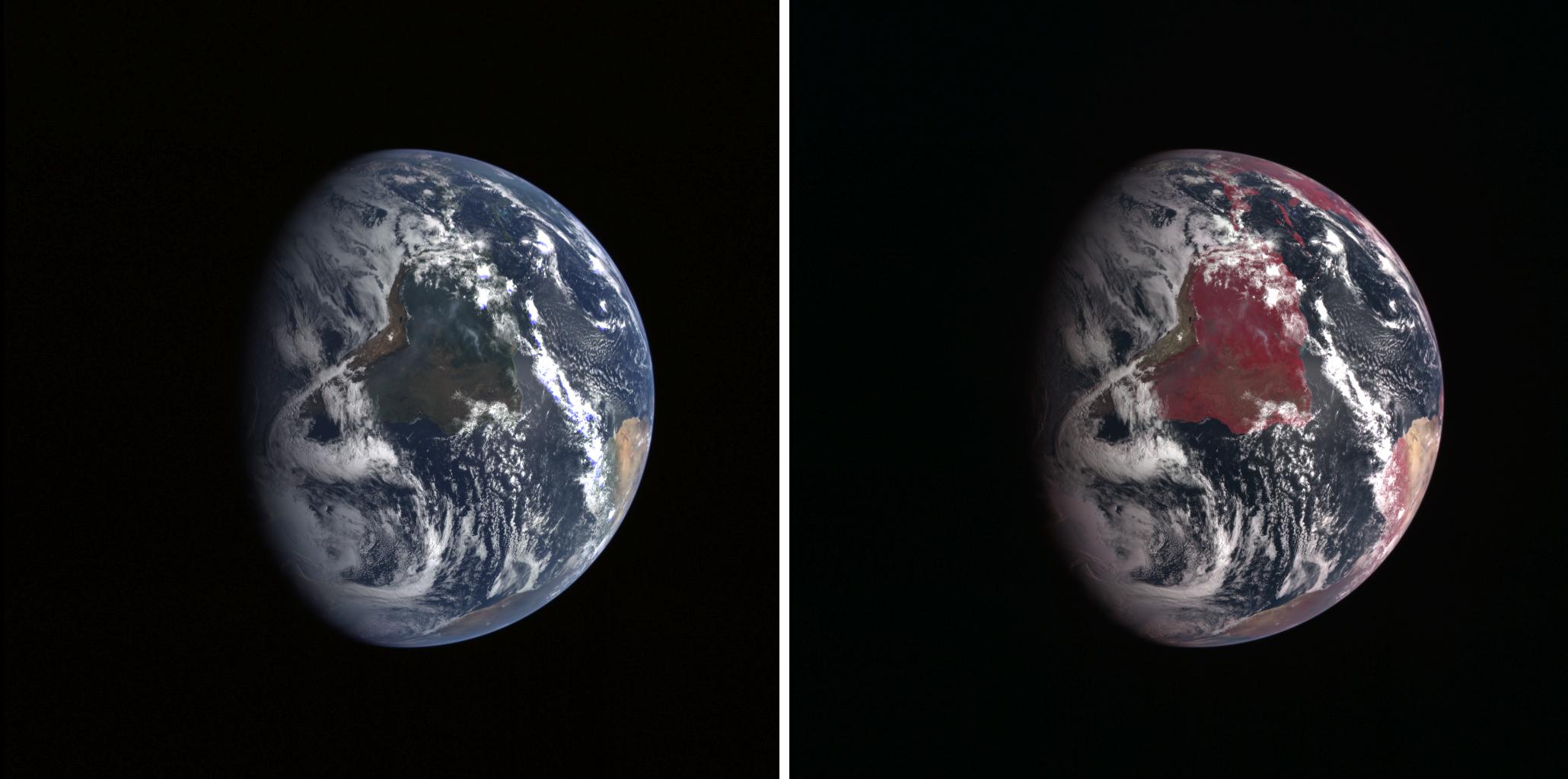Twins Image

| Credit | NASA/Johns Hopkins University Applied Physics Laboratory/Carnegie Institution of Washington |
|---|---|
| PIA Number | PIA10122 |
| Language |
|

MESSENGER's Earth flyby on Aug. 2, 2005, not only adjusted the spacecraft's path to Mercury - the gravity assist maneuver allowed the spacecraft team to test several MESSENGER science instruments by observing its home planet.
The Mercury Dual Imaging System's wide-angle camera passed with flying colors—several of them, actually—snapping a number of images across its full multispectral capability. The camera is designed to characterize minerals that may have formed in Mercury's crust. Telescope measurements from Earth suggest that Mercury's surface resembles the highlands on our moon: abundant feldspar (anorthite) with limited amounts of iron-rich minerals such as pyroxene and olivine. The MESSENGER team carefully picked 11 filters across visible and near-infrared wavelengths (400 to 1,100 nanometers) known to indicate these and other common silicate minerals.
This side-by-side look at Earth illustrates the value of multiple-wavelength imaging. The three-band composite at left is made from filters with peak sensitivities near 480 nm, 560 nm and 630 nm. These filters help distinguish materials with distinct visible color differences (ilmenite, volcanic glasses) but are also very close to the sensitivity of the human eye. (Natural color is somewhat subjective, so this combination of bands is "approximate" natural color.) The spacecraft was 63,950 miles (102,918 kilometers) above Earth when the images were taken.

